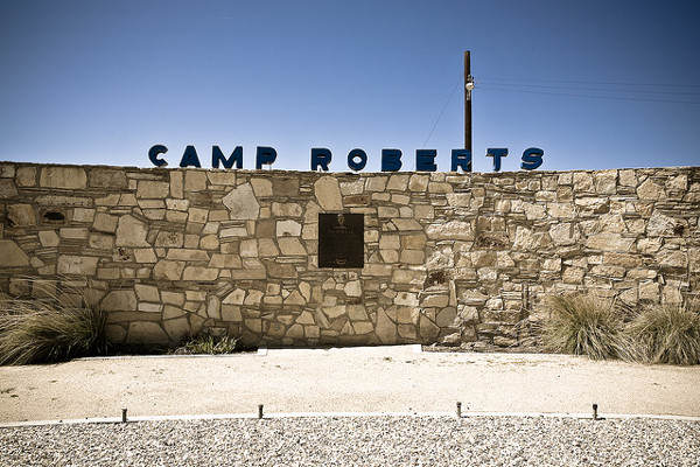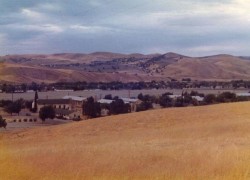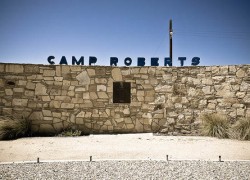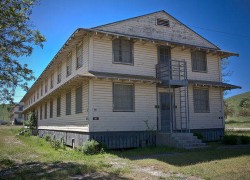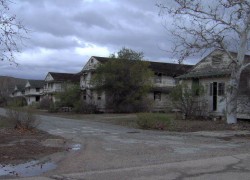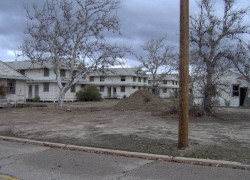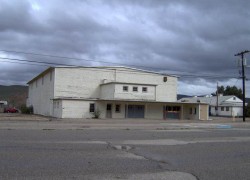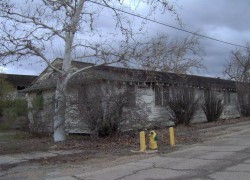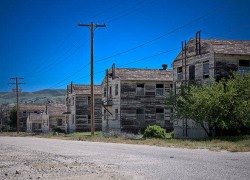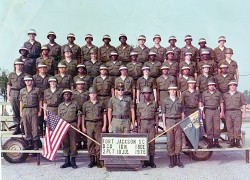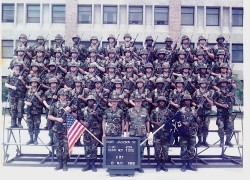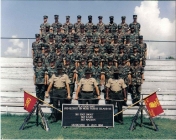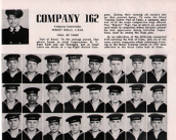Camp Roberts, California officially began it mission as a replacement training center in March 1941. At that time it ranked with the world's largest military training facilities. It may still be so in terms of training capacity, and so far as it is known features the largest parade ground (the length of fourteen football fields) on any military facility.
from: http://www.militarymuseum.org/campbob.html
The main Garrison was constructed to accommodate 23,000 officers and troops. The East Garrison, across the Salinas River, could accommodate 6,000 troops. The 26th Field Artillery Brigade was the first unit to occupy the East Garrison.
436,000 World War II Infantry and Field Artillery troops passed through an intensive seventeen week training cycle. Both the Infantry and Field Artillery Replacement Training Centers achieved enviable proficiency records where it counted, in the combat zones around the world to which their graduates were sent. A peak population was reached in 1945 when 45,000 troops were quartered in large tent cities located at the fringes of the Main Garrison
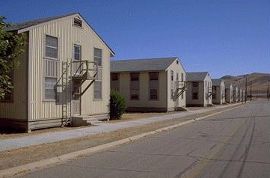 Besides the two Training Centers, Camp Roberts also had a 750-bed hospital complex (also supplemented with tent cities), and internment compounds for Italian and German prisoners of war. Many of the Italian POWs joined a special Army Service Unit after the surrender of Italy, and spent the remainder of the war as workers at Camp Roberts.
Besides the two Training Centers, Camp Roberts also had a 750-bed hospital complex (also supplemented with tent cities), and internment compounds for Italian and German prisoners of war. Many of the Italian POWs joined a special Army Service Unit after the surrender of Italy, and spent the remainder of the war as workers at Camp Roberts.
It was a different scene on 1 July 1946. With the out processing of returning soldiers from World War II complete, Camp Roberts went from busy city to ghost town literally overnight. The site was inactivated as a training base and reverted to "caretaker" status denoting a skeleton crew of maintenance personnel as the only permanent residents. During the summertime, National Guard and Army Reserve troops conducted fifteen day training cycles throughout the garrison. While retaining all of its value as a military training site, the camp remained inactive remainder of the year, until the onset of the Korean Conflict.
In June 1950, the People's Republic of Korea (North Korea) crossed over a demilitarized zone and invaded the Republic of Korea (South Korea). United Nations (UN) forces quickly responded, and in July 1950 Camp Roberts was again activated for troop training. The 321st Signal Base Depot had the honor of being the first unit to return for training. Camp Roberts chalked up another "first" with the addition of the Armor Replacement Training Center to the Infantry and Field Artillery centers established in World War II. The establishment of the new Armor center made it possible to training replacements for all three combat arms at Camp Roberts. Additionally, the terrain resembled that found in Korea, increasing it value for training for that combat area. The 7th Armored Division was the leading division at Camp Roberts during this period, and its patch was a familiar site in the area. By the end of the fighting in September 1953 approximately 300,000 men completed training there. Upon completion of returnee out processing in 1954, the site reverted once again to "caretaker" status, continuing to train National Guard and Army Reserve units in the summer cycles.
Little activity was sustained at this site from the end of the Korean War to the Vietnam War. During the Vietnam era, Camp Roberts Satillite Communication (SATCOM) StationCamp Roberts once again bustled with activity, though not on as grand a scale as World War II or the Korean War. The installation was not officially opened, and thus earned the title, "most active 'inactive' post in the U.S.". Camp Roberts supported a variety of operation, including the construction of a satellite communications station as part of a worldwide strategic communications network (the first station of its kind in the world). Additionally, the Army's Combat Development Experimentation Command (CDEC) used the site for weapons testing, and the Navy used one of the live-fire ranges to train gunners for river patrol boats.
Camp Roberts was officially closed by the Army in April 1970. On 2 April 1971, the California Army National Guard received control of the site, under a license from the Army, to establish a Reserve Component Training Center. The site continues to operate in this fashion today, and while reserve component units have priority under National Guard management, military forces from all service branches (and some foreign countries) have trained there. The qualities in the original Army Corps of Engineers study still serve the training needs of the military today, and will continue for the foreseeable future.
